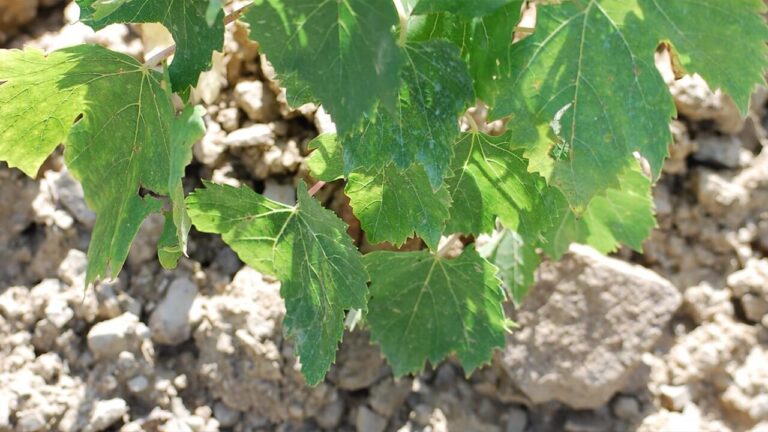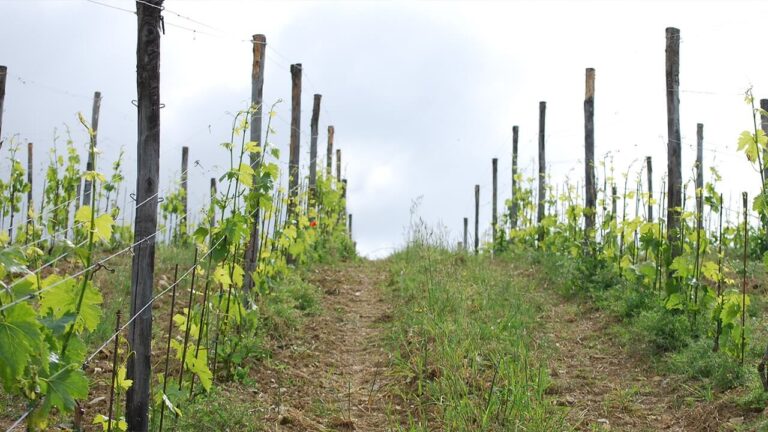Great care goes into the grape harvesting, selection and fermentation process. All vineyards are harvested by hand in 15-kg crates. The grapes are carefully unloaded onto a conveyor belt that transports the bunches to the de-stemmer. Under the watchful eye of 8 workers, the grapes are examined and any defective stems, leaves or berries are removed. The grapes then fall by gravity into the cellar tanks.
The whole berries begin fermentation within the grapes themselves, creating a kind of anaerobic carbonic maceration. The first few days of fermentation are crucial, temperatures are maintained at 26°C (79°F), and the process of breaking down the skins begins.
When fermentation is at its peak, the must is pumped into a separate tank where it is cooled and then pumped back over the skins in what is called delestage. Once the hydrometer registers that there is no more sugar in the must, pump-overs must be made without moving the must to another tank. This allows more extraction and oxygenation to keep the yeasts healthy as they turn all the sugar into alcohol. The new wine is kept on the skins for another 2 weeks after the end of fermentation.

The newly created wine is pumped into another tank and the skins are taken to the press. The skins are gently pressed to extract the pressed wine-this tight wine is kept separately.
The winery has the capacity to keep each vineyard lot separate during alcoholic fermentation and subsequent malolactic fermentation. This second fermentation takes place in stainless steel tanks where they are kept at 22°C to ensure ideal conditions for the selected malolactic bacteria. Once all the malic acid has been transformed into lactic acid, the wine is transferred to barrels.
The aging process varies depending on the wine. Chianti Classico Annata ages in large 15 Hl and 25 Hl oak barrels for 18 months. Chianti Classico Riserva ages in 300 L French oak barrels for 18 months. The barrels are used 3 times, with 30% new oak used for each vintage. After barrel aging, Chianti Classico Riserva spends 6 months in large barrels to soften the tannins. Cabernet sauvignon and cabernet franc mature in 100% new oak for 2 years.
Our soils are predominantly sandstone, limestone and shale, with exceptional drainage and structure that allow deep root growth.
With an elevation of 550 meters above sea level, air temperatures cool at night even during the hottest part of summer, allowing for slow and balanced ripening of the fruit. Thanks to the southern exposure, the vineyards are able to receive all the sunlight they need to ensure perfect ripening of the grapes.
Located in the hills of Radda in Chianti, Podere Capaccia’s vineyards enjoy ideal conditions for growing grapes.

This vineyard is located on the crest of the Capaccia property. The vines bask in the sun all day, while gentle breezes constantly circulate the air. The marl soil allows for perfect drainage, and deep clay below the surface retains water for the roots. The Sangiovese from this vineyard is an expression of the region and of true Chianti Classico.

Thanks to its southwest exposure and varied soil, this Sangiovese vineyard matures perfectly. Although it is still a young vineyard, the vines have thrived in this soil.

On the southeast side of the hill are Cabernet sauvignon, Cabernet franc and Sangiovese vines. The soil is similar to that of the Cortaccio vineyard, but has less silt and more drainage. The vines take longer to find their soil and will need an extra year before reaching full production.

On a steep southern slope, vineyard management is a delicate balance between erosion control and soil structure with the use of cover crops. Organic material is reinforced at the top of the slope to balance the vineyard. Vines at the base of the slope are more vigorous, and bunches are thinned in summer to ensure full ripeness.
Podere Capaccia Società Agricola Srl
53017 Radda in Chianti, Siena, Italy
P.IVA 00356670521
C.F. 92000630522
R.E.A. SI-98975